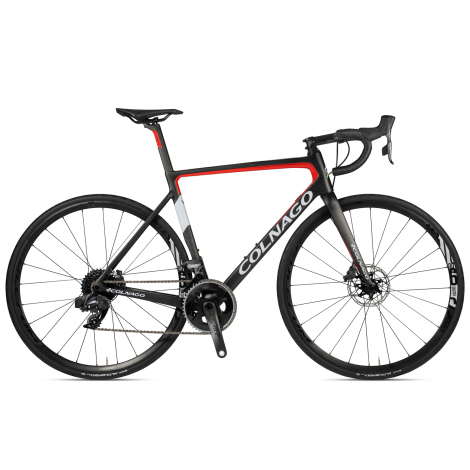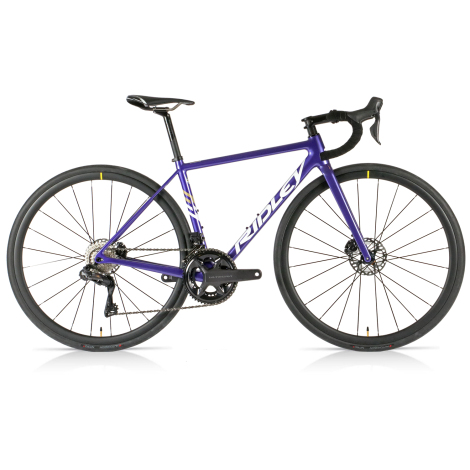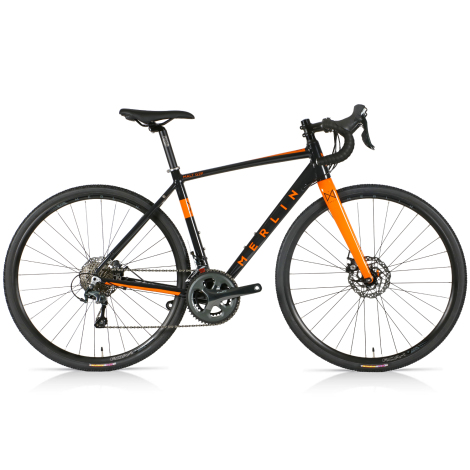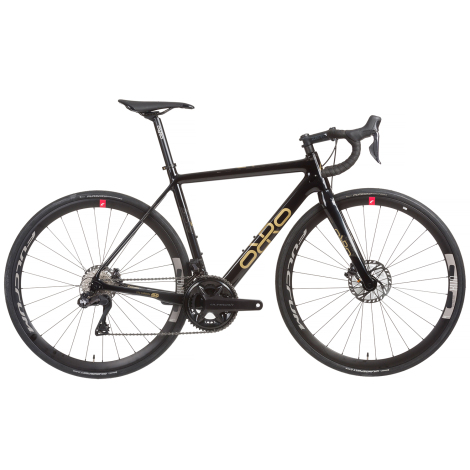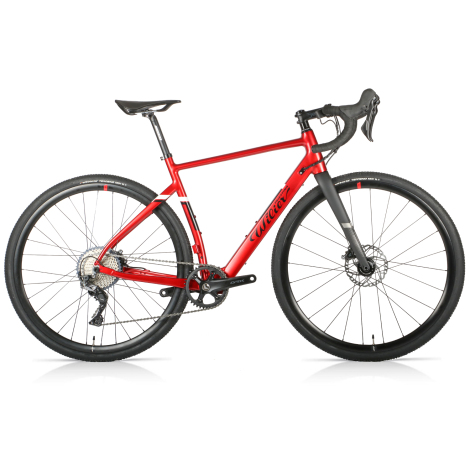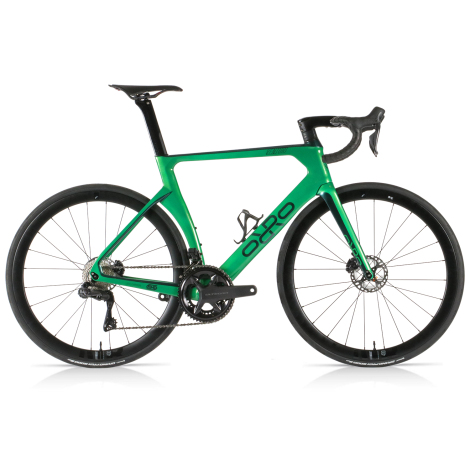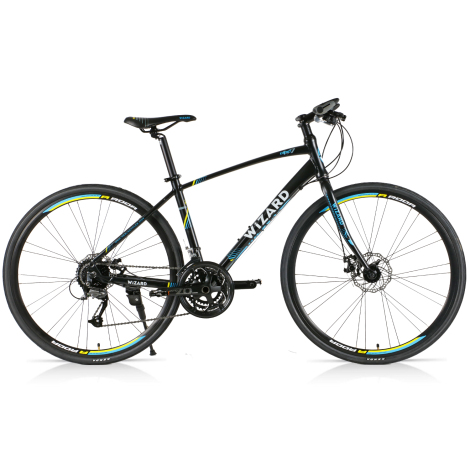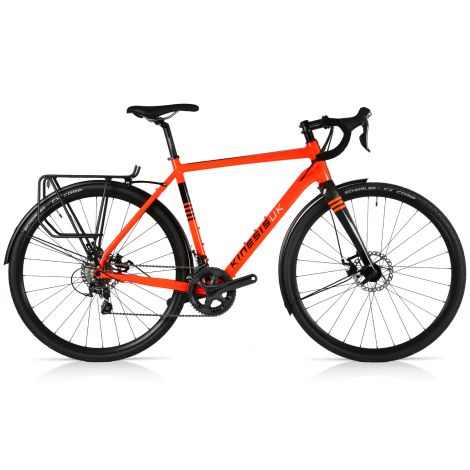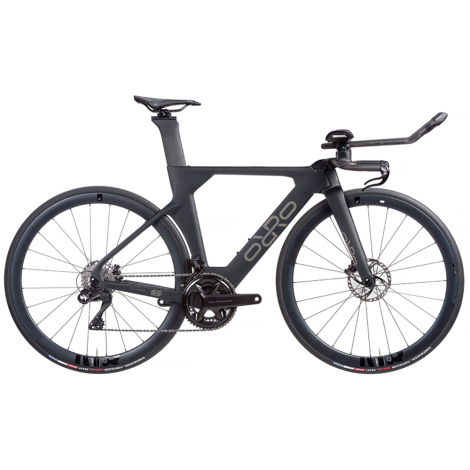Do you know your Aero Bike from your Sportive bike? Or your Gravel Bike from your Time Trialer? Here’s how drop-bar bikes differ.
With their big, 700c wheels, skinny tyres, drop bars and lightweight components, road bikes are the best choice for going fast and covering long distances. There are different types of road bike with variations designed to make the bike perform better at a certain disciplines.
These days offer a lot more choice and you’ll hear words like sportive, gravel, E-Bike, endurance, commute, race and more describing road bikes. Although all have a similar look, certain bikes work better depending on your type of riding.
Race bikes
Lightweight, no fuss, stripped down. These bikes are designed to go fast. Expect a low front end for an aerodynamic position (shorter head tube, flatter stem, low handlebars). Emphasis on speed than comfort. Expect a stiffer frame and super responsive handling. Gearing tends to be higher for more speed. Wheels are either lightweight models or carbon aero versions. Finishing kit is all about efficiency as well so tends to be lighter with a nod to aero benefits to save rider energy as well as overall bike weight.
Buy a race bike if you want light weight, no loss of power. A lively ride and you want to go fast all the time.
Good for: going fast, racing, speed thrills.
Not good for: touring, long rides in steep terrain, inflexible bodies.
Gravel bikes
Gravel bikes can tackle off road terrain such as tracks and trails whilst still retaining the ability to cover long rides relatively quickly. On first sight a gravel bike looks similar to a cyclocross bike, however the geometry of a gravel bike is different, more designed for comfort, rather than the more aggresive, twitchier-handling geometry of a cyclocross bike.
Gravel bikes combine some of the comfort aspects of an endurance bike with some of the off road capabilities of a cyclo cross bike. The result is a bike which is comfy enough to be ridden all day and tackle all but the most extreme terrain, where mountain bikes still rule. Gravel bikes feature disc brakes and a strong well built frame which can handle the additional knocks and challenges these bikes are designed for. Larger clearances at the fork and rear stays allow for wider, more knobblier tyres and the debris which they can collect.
Entry – Mid range gravel bikes tend to feature an aluminium frame combined with a carbon fibre front fork. Higher specced gravel bikes feature a carbon fibre frame and fork. Regardless of their construction material, gravel frames tend to be built more solidly than regular road bike frames.
The drawback to all this extra in-built flexibility is a slight reduction in speed, however this can be marginal and a price worth paying for a ‘go anywhere bike’.
Good For: Venturing off road, general riding
Not Good For: High end road performance / Speed
Sportive / Endurance bikes
Gran Fondo / Sportives are long-distance mass participation cycling challenge events where the emphasis is on endurance rather than pure speed. Sportive / Endurance bikes offer a lot of the lightweight benefits of a traditional race bike but with one different attribute – comfort. The riding position is more upright offering greater all-day comfort at the expense of aerodynamic efficiency.
The geometry of the frame is also tweaked to offer comfort and more stable/steadier handling over longer distances. The material make-up of Sportive bikes tends to be different from pure race models. The tubes are designed to ‘give’ a little bit. Less stiff, more comfort.
Gearing is lower to help cope with big hills without the need for speed. Wheels are still lightweight but more robust and disc brakes and larger clearances (for wider tyrers ) are more popular in this type of bike. Finishing kit is more about comfort but again still light enough to not affect overall weight too dramatically.
In short, a sportive / endurance bike is a more comfortable race bike. Consider one if head down all out speed and super light weight isn’t a priority but comfort on longer rides is. Also worth considering if you are less flexible or stuggle for comfort on a race bike.
Good for: long distances / hilly terrain
Not good for: high performance racing or short blast adrenaline rides.
E-Bikes
The growth of E-Bikes has tapped into the demand of people who might prefer or need a little extra help. E-Bikes are pedal assist and help maintain pace for longer distances or help negociate rolling or hilly terrain with much less effort – this makes E-Bikes a great option for many. These days there are different E-Bike options across all genres of bike riding. Drop-bar E-Bikes are available in road and gravel focussed options. The latest technology means that E-Bikes often don’t really look any different to regular road or gravel bikes, see the Wilier Triestina Hybrid Drop Bar E-Bike below.
Good for: Riders who need a little assistance
Not good for: Racing
Aero bikes
Aero road bikes take many of the aerodynamic features of a time trial (TT) bike and put them into a more of a regular road race frame. This does tend to add a bit of weight compared to a race frame. However aero advantages can help save time or reduce the amount of power required to maintain a given speed. Produced in carbon, these bikes feature similar geometry and material lay up as a race frame. Expect a low and fast position. Cables tend to be hidden out of the air – running internally through the inside of the frame. Coupled with a set of deep section wheels they can offer impressive time savings. The gearing is similar to race bikes ie. high for more speed and finishing kit is usually lightweight and aero styled.
Good for: slicing through the air, Fast riding / racing
Not good for: slower, relaxed rides, touring, gravel riding
Commuter bikes
The real workhorses of the bike world. Built with comfort and durability in mind as they will take a bashing day after day in all weathers. Weight isn’t such an issue. Frame geometry offers a more upright position for greater comfort and in-traffic vision. Frames have fittings for proper mudguards and racks to keep you dry and so you don’t have to carry any weight on your back. Wheels are all about strength and longevity and coupled with sturdy tyres offer greater impact protection and increased comfort; just don’t expect supple handling or low weight. Disc brakes are also popular as they offer hassle free stopping and the lack of rim brakes rub means slight wheel buckles are less of a problem.
Bars can be either drop or flat depending on your preference.
Good for: day-in day-out reliability and comfort
Not good for: bike-handling thrills, flat-out speed racing
Touring bikes
Touring bikes are built for comfort over long distances carrying heavy loads (such as clothing or camping stuff) “Overbuilt” is a good description as the frame and components are built to last. Despite the weight they are very comfortable. At first the gearing may seem unbelievably low when unladen but get some panniers on there and you’ll appreciate it. The frame geometry is different, long and relatively upright for greater comfort and easier handling, again crucial when out on long rides with a heavy load. Wheels are super tough, with more spokes than other road bikes. The rims are bombproof to cope with the loads and surfaces. Disc brakes are becoming more and more popular as they offer better braking in all conditions especially when carrying heavy loads. Components are strong and long lasting with more emphasis on comfort due to long periods riding.
If you are planning on carrying any kind of load in your pannier a long distance and heading off for a few days, get a touring bike.
Good for: touring, commuting, smoother gravel riding
Not good for: racing, any speed-work.
Time Trial (TT) / Triathlon
For out-and-out speed against the clock. These bikes are built with one thing in mind, to go as fast as possible and cheat the wind.
They are packed with aerodynamic features all designed to help the bike, and rider, pass through the air more cleanly. This means less power is needed to propel them forward at any given speed. The frames look different, with their large flat tubes, steep angles, with cables and brakes hidden away. The geometry puts the rider further forward and in a lower position. Aero bars extend out the front which also makes the rider narrower and makes it easier to ride in this position as they have elbow pads to rest on. Gearing is similar to a race bike or even larger as the rider will need higher gears to go faster. Wheels are usually deeper section carbon fibre rims, three of four spoke carbon or disc rear wheels. These cut through the air easier using less power. The finishing kit matches the aero frame and wheels.
Everything about these bikes screams speed. Subtle features such as deep rims, hidden cables and aero seat posts all add up when paired with a skinsuit and aero helmet.
Good for: Racing Time Trials or Triathlons
Not good for: Popping to the shops, touring, gravel – anything accept time trials and triathlons
Browse all of these different types of road bikes at Merlin Cycles

